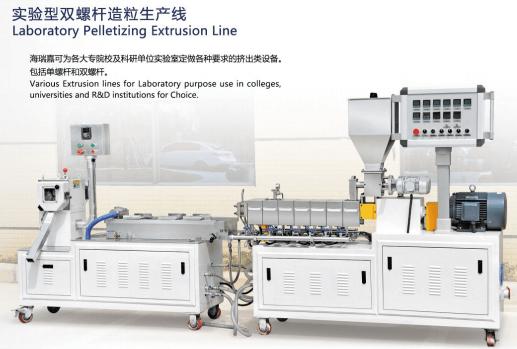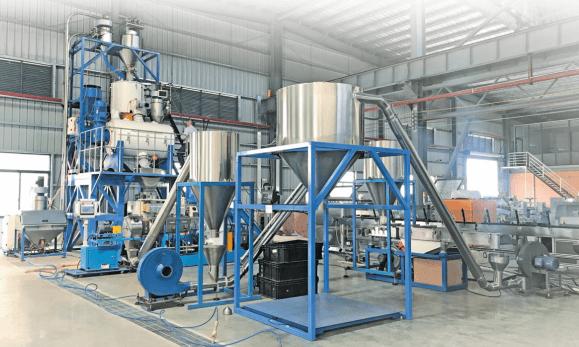
A Guide to Pelletizing in the Medical Industry
The medical industry plays a crucial role in improving healthcare outcomes worldwide. Behind the scenes, medical equipment manufacturers employ innovative techniques to produce devices that meet the stringent requirements of the industry.
Pelletizing, a specialized manufacturing process, has emerged as a valuable method for producing medical devices with enhanced properties and functionality. In this guide, we will explore the concept of pelletizing in the medical industry, its advantages, the pelletizing process, applications of pelletized medical devices, quality control considerations, and future trends.
Pelletizing, a specialized manufacturing process, has emerged as a valuable method for producing medical devices with enhanced properties and functionality. In this guide, we will explore the concept of pelletizing in the medical industry, its advantages, the pelletizing process, applications of pelletized medical devices, quality control considerations, and future trends.
What is the Importance in Pelletizing in the Medical Industry
Pelletizing involves transforming raw materials into small, uniformly shaped pellets. These pellets serve as the foundation for manufacturing various medical devices. Pelletizing offers several advantages over traditional manufacturing methods, including improved product consistency, increased drug loading capacity, controlled release of medications, and enhanced bioavailability. Additionally, pelletized medical devices can be customized to meet specific patient needs, offering personalized healthcare solutions.

What is the Pelletizing Process?
To achieve successful pelletization, careful consideration must be given to the selection of raw materials. Biocompatible materials, such as polymers, metals, and ceramics, are commonly used in the medical industry. These materials are prepared and mixed according to specific formulations to optimize their characteristics for pelletization.
The pelletizing process itself involves several techniques, each tailored to meet different manufacturing requirements. Extrusion pelletizing is commonly employed, where the raw materials are mixed, heated, and forced through a die to form cylindrical pellets.
Spheronization is another technique that transforms extruded pellets into spherical shapes, improving their flow properties and uniformity. Spray drying, often used for pharmaceutical applications, involves atomizing a solution or suspension into droplets that solidify into pellets during the drying process.
Factors such as material properties, equipment considerations, and quality control requirements significantly influence the pelletizing process in the medical industry. Close attention must be paid to ensure consistent pellet size, shape, and mechanical strength to meet the demanding standards set by regulatory bodies.
The pelletizing process itself involves several techniques, each tailored to meet different manufacturing requirements. Extrusion pelletizing is commonly employed, where the raw materials are mixed, heated, and forced through a die to form cylindrical pellets.
Spheronization is another technique that transforms extruded pellets into spherical shapes, improving their flow properties and uniformity. Spray drying, often used for pharmaceutical applications, involves atomizing a solution or suspension into droplets that solidify into pellets during the drying process.
Factors such as material properties, equipment considerations, and quality control requirements significantly influence the pelletizing process in the medical industry. Close attention must be paid to ensure consistent pellet size, shape, and mechanical strength to meet the demanding standards set by regulatory bodies.

Applications of Pelletized Medical Devices
Pelletized medical devices find applications in various fields within the healthcare industry. One notable area is drug delivery systems. The controlled release and sustained drug delivery capabilities of pelletized devices offer significant advantages in administering medications. Pelletized drug delivery systems can provide precise dosing, minimize side effects, and improve patient compliance.
In addition to drug delivery, pelletizing techniques are employed in the production of implants and prosthetics. The pelletized form allows for greater customization, enabling manufacturers to create patient-specific implants tailored to individual anatomies. Moreover, the controlled release of drugs from pelletized implants can aid in post-surgical recovery and tissue regeneration.
Furthermore, pelletizing is utilized in the manufacturing of surgical instruments and tools. Pelletized materials, such as biocompatible polymers or metal alloys, offer excellent mechanical properties and can be shaped into various surgical instruments, including sutures, clips, and screws. These pelletized instruments contribute to improved surgical outcomes, reduced infection rates, and enhanced patient comfort.
In addition to drug delivery, pelletizing techniques are employed in the production of implants and prosthetics. The pelletized form allows for greater customization, enabling manufacturers to create patient-specific implants tailored to individual anatomies. Moreover, the controlled release of drugs from pelletized implants can aid in post-surgical recovery and tissue regeneration.
Furthermore, pelletizing is utilized in the manufacturing of surgical instruments and tools. Pelletized materials, such as biocompatible polymers or metal alloys, offer excellent mechanical properties and can be shaped into various surgical instruments, including sutures, clips, and screws. These pelletized instruments contribute to improved surgical outcomes, reduced infection rates, and enhanced patient comfort.
Quality Control and Regulatory Considerations
Maintaining stringent quality control measures is imperative in the production of pelletized medical devices. Stringent testing protocols and inspection processes should be implemented to ensure the integrity, reliability, and safety of the final products.
Additionally, regulatory bodies, such as the Food and Drug Administration (FDA) in the United States, provide guidelines and compliance requirements for manufacturing pelletized medical devices. Adhering to these regulations guarantees that the devices meet the necessary standards for commercialization and patient use.
Additionally, regulatory bodies, such as the Food and Drug Administration (FDA) in the United States, provide guidelines and compliance requirements for manufacturing pelletized medical devices. Adhering to these regulations guarantees that the devices meet the necessary standards for commercialization and patient use.
Conclusion
Pelletizing has emerged as a valuable technique in the medical industry, offering numerous advantages in the production of medical devices. From drug delivery systems to implants and surgical instruments, pelletized devices provide improved performance, customization, and patient outcomes. However, it is essential to adhere to strict quality control measures and regulatory guidelines to ensure the safety and effectiveness of these devices.
In conclusion, compounding & pelletizing is a powerful manufacturing method that is revolutionizing the medical industry. As technology and research progress, we can expect to witness even more exciting developments and applications of pelletized medical devices in the years to come.
In conclusion, compounding & pelletizing is a powerful manufacturing method that is revolutionizing the medical industry. As technology and research progress, we can expect to witness even more exciting developments and applications of pelletized medical devices in the years to come.



